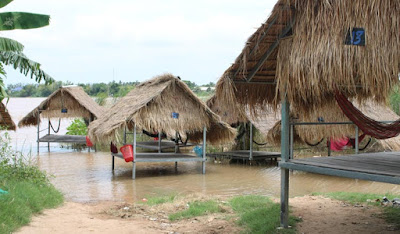“China has funded numerous hydropower projects inside Laos, and it has built 11 dams on the upper reaches of the Mekong River”
Laos in partnership with China has submitted plans to to the Mekong River Commission (MRC) to build yet another new hydropower dam on the Mekong River. Construction is expected to start later this year, the Mekong River Commission (MRC) said on Monday.
The Sanakham dam hydropower plant, with an estimated cost of US$2.073 billion, will be developed by Datang Sanakham Hydropower company, a subsidiary of China’s state owned Datang International Power Generation Co, MRC said.
Hydropower development is central to the Laos government’s plan to export around 20,000 megawatts of electricity to its neighbours by 2030. This latest project will be the sixth proposal of nine planned mainstream Mekong dams inside Laos.
The Sanakham dam hydropower plant, with an estimated cost of US$2.073 billion, will be developed by Datang Sanakham Hydropower company, a subsidiary of China’s state owned Datang International Power Generation Co, MRC said.
Hydropower development is central to the Laos government’s plan to export around 20,000 megawatts of electricity to its neighbours by 2030. This latest project will be the sixth proposal of nine planned mainstream Mekong dams inside Laos.
Sanakham dam will be the sixth of nine dams in Laos on the Mekong River
.
.
Laos has already completed two dams on the Mekong River. The 1,285-megawatt Xayaburi Dam and the 260-megawatt Don Sahong Dam last year. The dams were built despite objections by environmental groups worldwide.
Objectors said the dams threaten a river system whose fisheries, sediment and seasonal flooding for agriculture support some 60 million people.
Sanakham’s proposed site is located 155 kilometres north of Vientiane, the capital of Laos. Its projected to produce 684 megawatts of electricity once it start operating in 2028.
China has funded numerous hydropower projects inside Laos on the Mekong
The Sanakham dam is the sixth project that has been put forward to the prior consultation process with the MRC. The MRC intergovernmental agency that works with regional governments.
China has funded numerous hydropower projects inside Laos, and it has built 11 dams on the upper reaches of the Mekong River inside Chinese territory that have come under scrutiny for allegedly altering the river’s natural flow.
The Sanakham project will now have to go through an MRC prior consultation process, which normally lasts for six months, where other MRC members including Thailand, Cambodia and Vietnam can review the project and assess any cross-border impacts. While they can suggest changes, the MRC consultation process cannot veto any project.
Source - Chiang Rai Times / Reuters
Objectors said the dams threaten a river system whose fisheries, sediment and seasonal flooding for agriculture support some 60 million people.
Sanakham’s proposed site is located 155 kilometres north of Vientiane, the capital of Laos. Its projected to produce 684 megawatts of electricity once it start operating in 2028.
China has funded numerous hydropower projects inside Laos on the Mekong
The Sanakham dam is the sixth project that has been put forward to the prior consultation process with the MRC. The MRC intergovernmental agency that works with regional governments.
China has funded numerous hydropower projects inside Laos, and it has built 11 dams on the upper reaches of the Mekong River inside Chinese territory that have come under scrutiny for allegedly altering the river’s natural flow.
The Sanakham project will now have to go through an MRC prior consultation process, which normally lasts for six months, where other MRC members including Thailand, Cambodia and Vietnam can review the project and assess any cross-border impacts. While they can suggest changes, the MRC consultation process cannot veto any project.
Source - Chiang Rai Times / Reuters



































